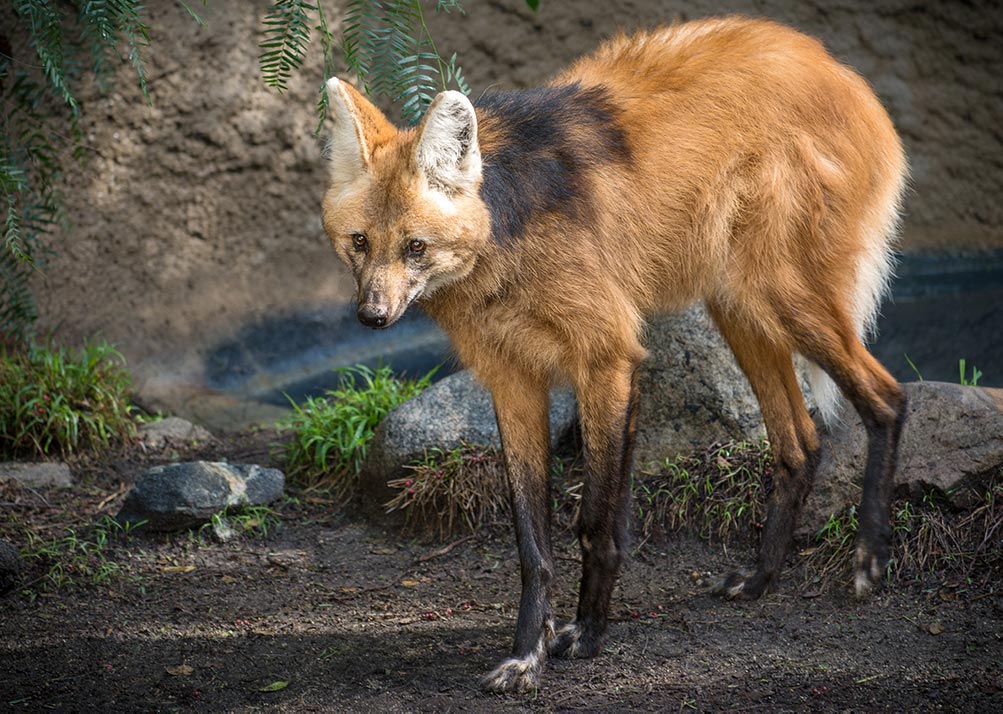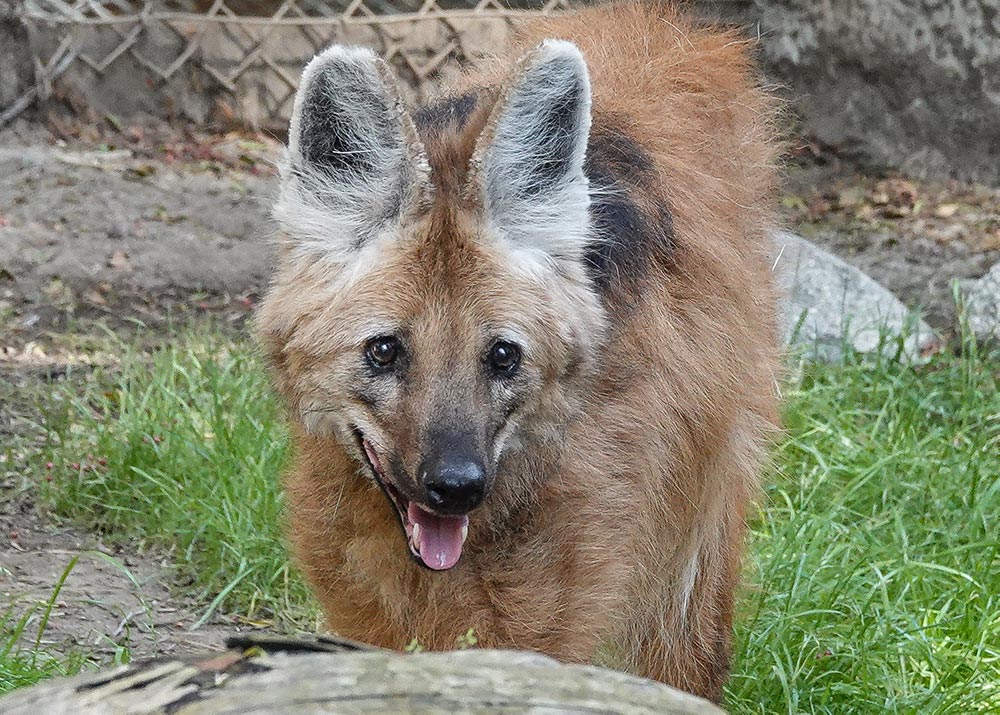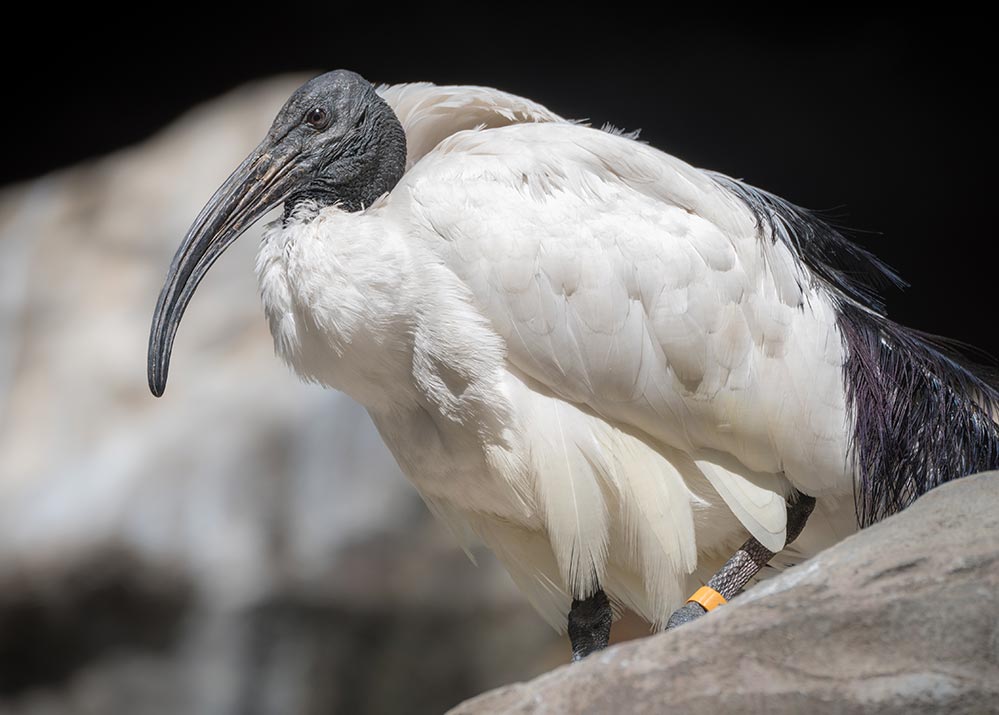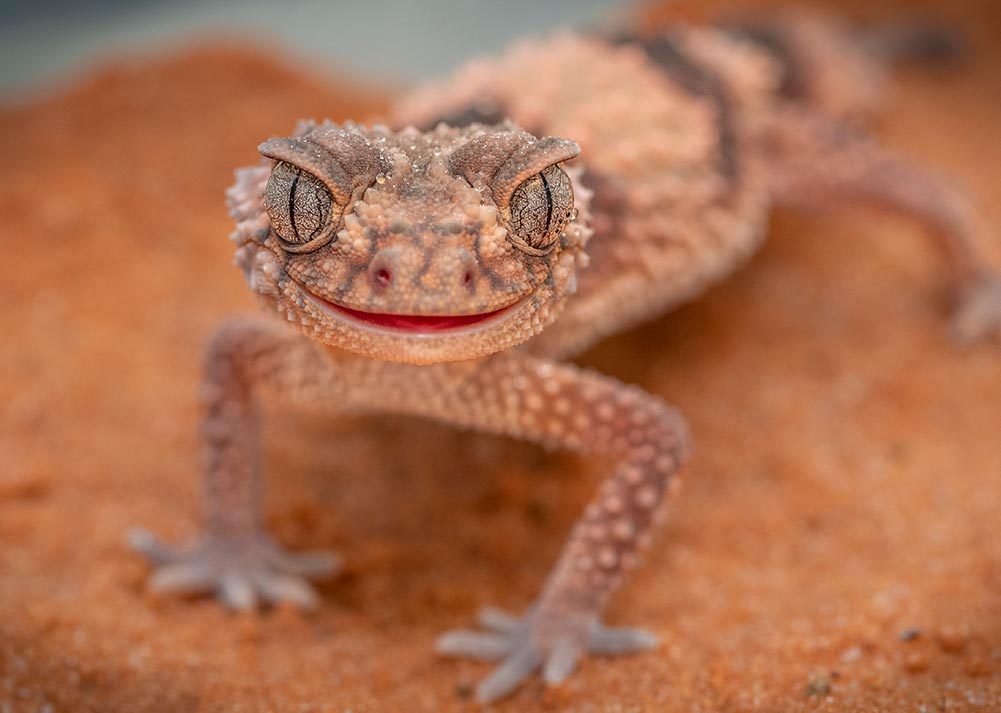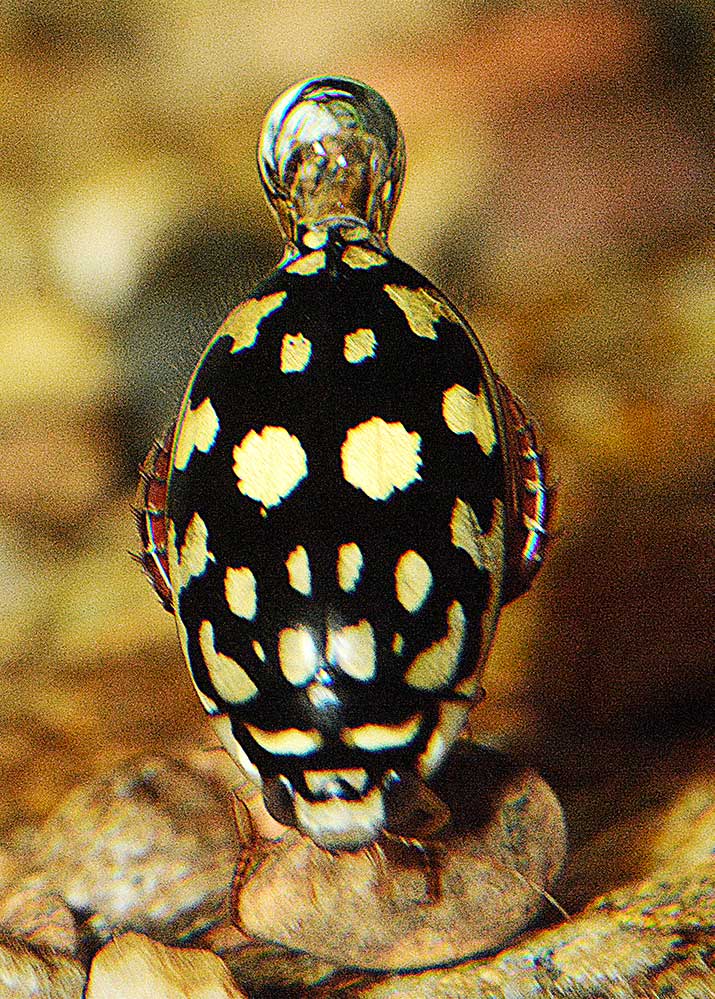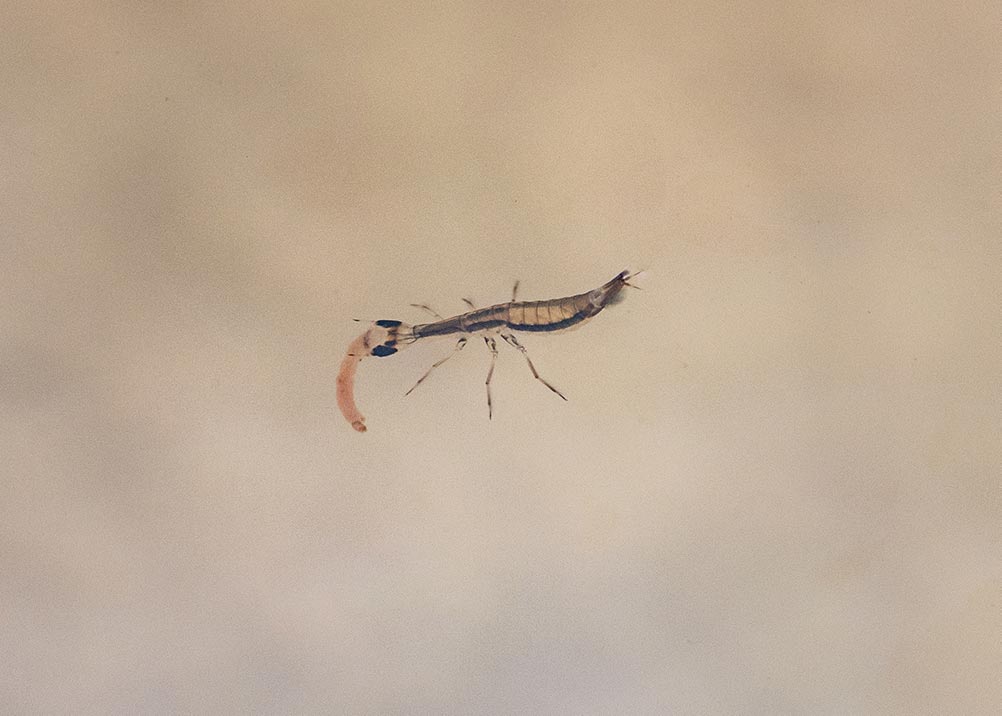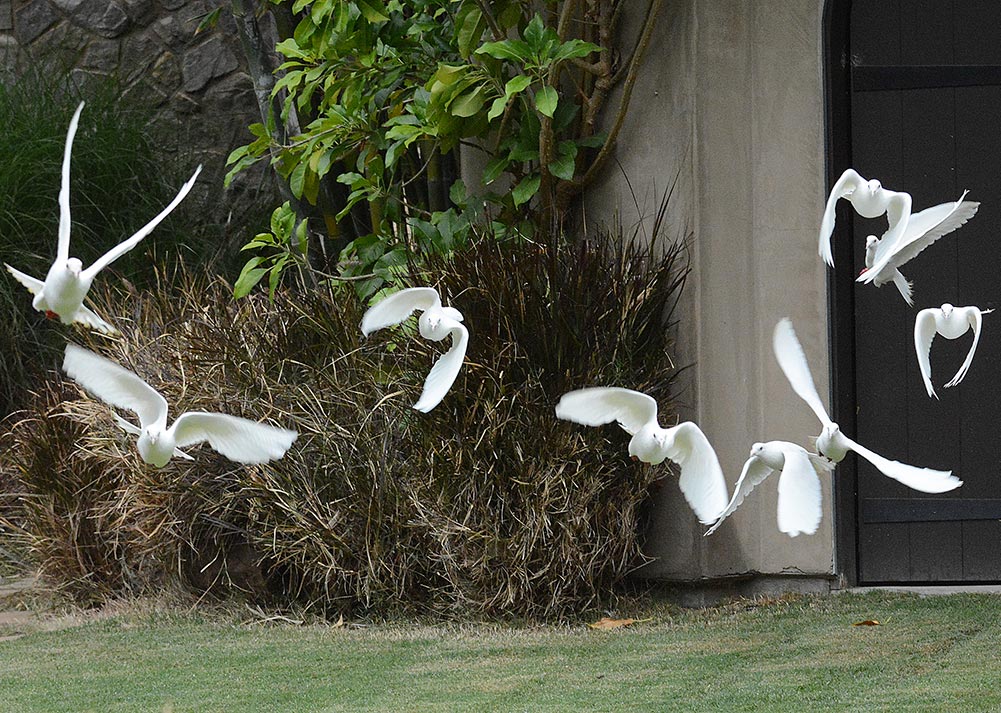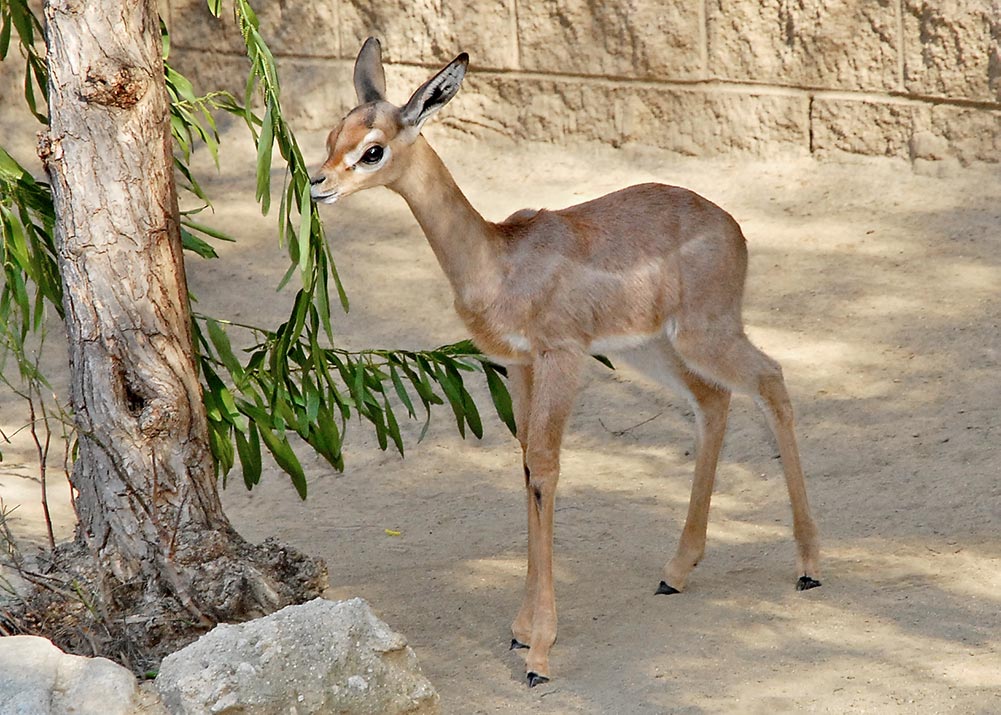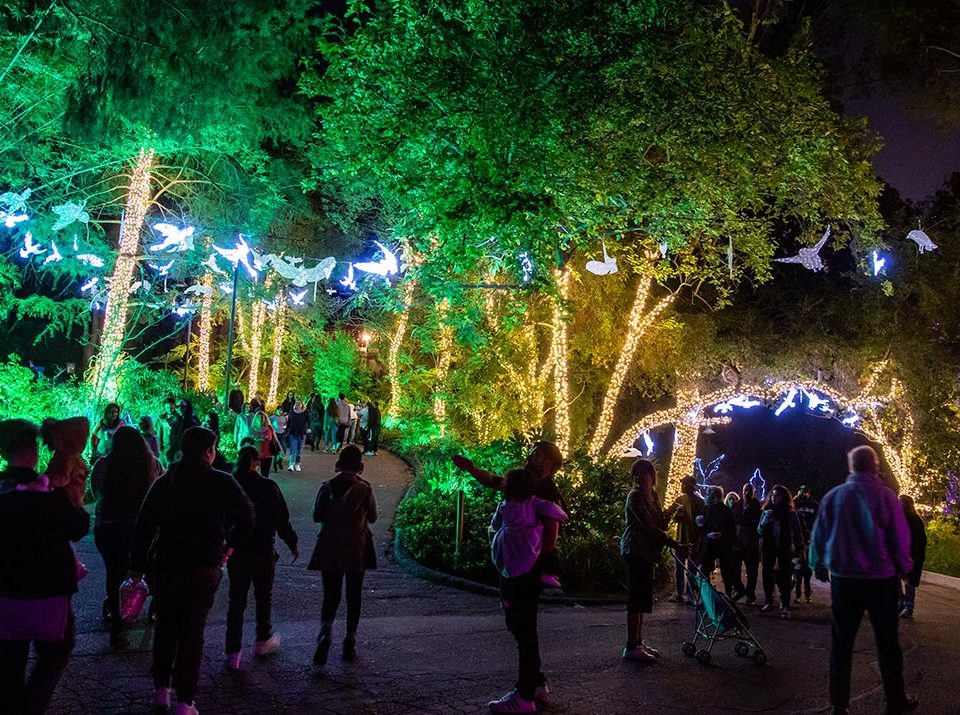NEW IN THE ZOO: Wombats, Vipers, Pigs, and Pygmy Falcons

YEAR OF THE BIRD… FOREVER! Celebrate birds every day with the L.A. Zoo.
December 6, 2018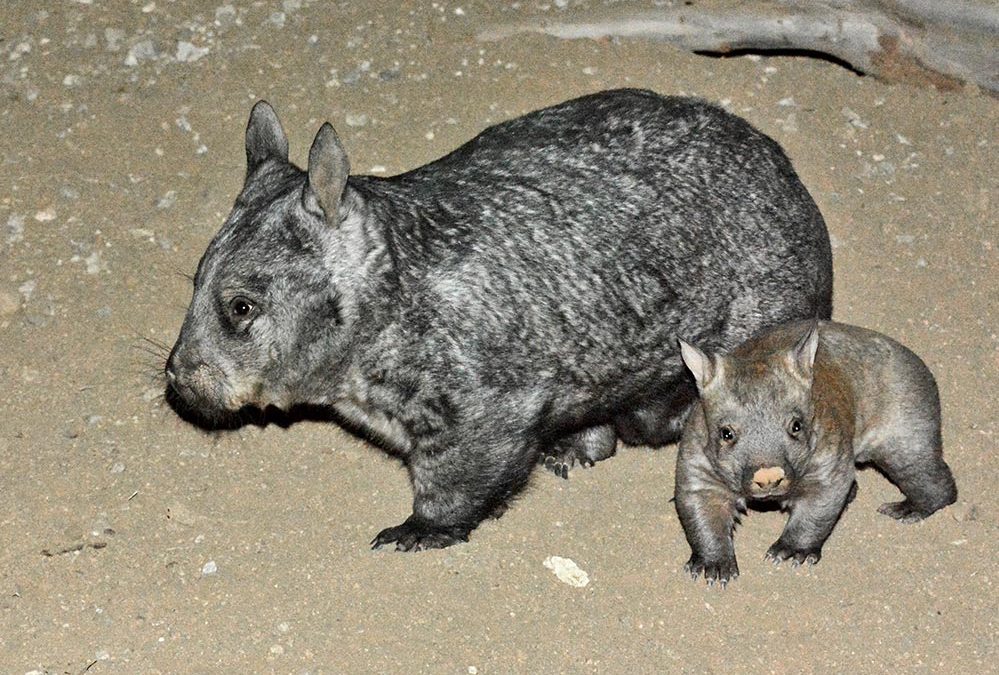
This joey is the first wombat birth for the L.A. Zoo. Photo by Tad Motoyama
The first offspring of our Southern hairy-nosed wombat pair—Murray and Olga— was born in May and is now out of his mother’s pouch, where he had developed from a tiny, bald, blind newborn into a stocky, furry, rambunctious joey. See him exploring the habitat inside Australia House with mom Olga now. Wombat fathers don’t participate in rearing offspring, so dad Murray is kept in a separate enclosure within Australia House, or hangs out in a habitat behind the scenes.
Though not classified as endangered (unlike the Northern hairy-nosed wombat which is critically endangered), this species is negatively impacted by habitat loss. Wombats are burrowers with stout bodies and sturdy, short legs. They reach about three feet in length and can weigh up to 70 pounds. Australia is very particular about allowing its wildlife to leave the country, and few zoos in North America have wombats. Murray came to L.A. in 2013 from Brookfield Zoo in Chicago and Olga arrived from Australia in July 2016.





